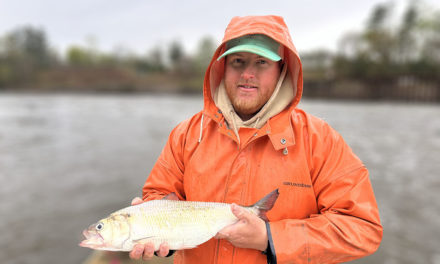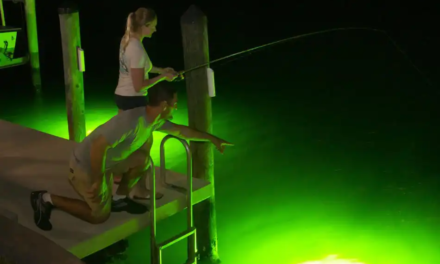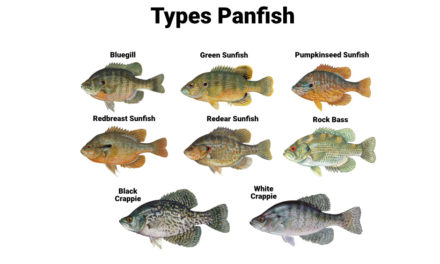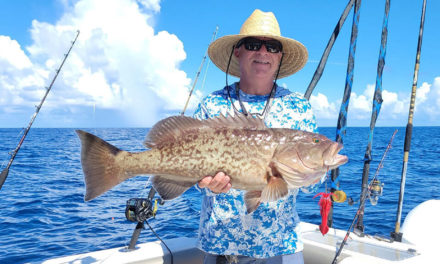Tips, Tackle & Techniques for Beginners
Spring is considered one of the best seasons for fishing, especially for panfish lovers. However, fishing in the spring requires different techniques than in other seasons, especially when catching panfish. Panfish are small to medium-sized fish abundant in freshwater bodies such as ponds, lakes, and rivers. Crappie, perch, sunfish, and bluegills are some of the most popular panfish species for anglers to target during this season. They actively feed during the springtime, making it an excellent time to go out and target these species. So, to help improve your chances of success, here are the best tips, tricks, and techniques to help you maximize your catch when looking to catch panfish in the spring.
1. Location:
Choosing the right location is the first step to having a successful panfish catch. During the spring, panfish swim from deep to shallow waters for spawning purposes in various freshwater bodies, including shallow ponds, lakes, reservoirs, and slow-moving streams or rivers with cover or vegetation. Therefore, look out for areas that have cover or vegetation.
Since panfish love to hang around structure areas like weed beds, fallen trees, docks, or rocks that provide them with cover, they are keen on these structures, as they provide shade and protection from predators. You can also use depth maps to locate the shallow parts of the waterway.
2. Bait:
Springtime is the peak period for panfish, and using the correct type of bait can make all the difference. Panfish are omnivorous and will eat almost anything that looks tasty and moves, so choose baits that suit your preferences and style.
Live bait is always an excellent choice for panfish, including nightcrawlers, red worms, crayfish, crickets, and minnows. Artificial bait such as jigs, soft plastics, grubs, and spinners can also be effective. Be sure to match the size of the bait and lures to the size of the fish you target.
3. Tackle:
The next step is selecting the appropriate equipment. Circle hooks, slip bobbers, and fluorocarbon leaders tied to braided mainline (uni-to-uni knot) will serve you well. Ultralight rods combined with light or even ultra-light reels are appropriate for catching panfish. Using a heavier rod can make it difficult to detect bites and fish. Because an ultralight rod has a soft tip, it is ideal for detecting the bites, which can be light during the spring. Moreover, a lightweight rod will help you cast your line farther and more accurately.
4. Pay attention to the weather:
Weather can significantly impact your chances of success when fishing for panfish in the spring. The temperature of the water plays a significant role in the fish’s activity level. As the water temperature rises, panfish become more active and feed aggressively.
The best time to go fishing is when there’s a high-pressure system, accompanied by clear skies and more stable weather conditions, which panfish tend to prefer. Overcast days, warm fronts, and rising barometric pressure are great indicators for catching panfish. Conversely, you’ll want to avoid fishing on days with strong wind or significant changes in barometric pressure, which can cause panfish to become less active.
5. Technique:
Springtime is the best time to use a slow fishing technique when targeting panfish. Panfish typically enjoy feeding on the surface and around cover such as trees, boulders, and grass lines. When using lures or baits that mimic small insects or other biting organisms that panfish might eat, such as a worm or grub, try to cast it directly where the fish are likely to be. Casting jigs, wet flies, or small spinners through the cover around the shoreline is a tried and tested technique.
Techniques like drifting and bobber fishing work well for panfish.
Keep your bait stationary after casting, and give the fish time to find it. Once you’ve noticed a bite, be patient, and let the fish take the bait and set the hook before reeling it in. You can also try drifting your bait under a bobber along the bottom of the water, which can be effective when fishing in deeper water.
6. Patience:
Fishing is supposed to be fun, so don’t forget to relax. It requires patience, and it’s much better if you enjoy the fishing process, not just the result of having a catch. Panfish are not the most aggressive species, and they might take their time to bite. Be patient and try different techniques to find what works. Be patient and positive, even if you don’t catch anything. Remember to appreciate the beautiful scenery and nature around you, and enjoy the company of your fishing buddies.
In conclusion, panfish fishing in the spring can be a great way to enjoy the outdoors and bring home a tasty meal. They are abundant in freshwater lakes and streams; catching them is a great way to enjoy the warmer weather and experience nature’s beauty. The key to catching panfish lies in targeting the right location, using the right bait and equipment, perfecting your technique, paying attention to the weather, and building up the patience to keep trying even when they’re not biting; you’ll be ready to catch panfish like a pro. Keep in mind that getting the perfect catch may take some practice, but with time, a little bit of luck, and these tips, you’ll be catching more panfish in no time!





